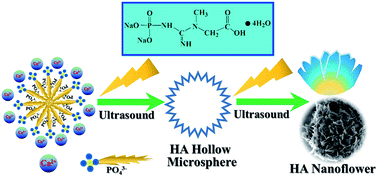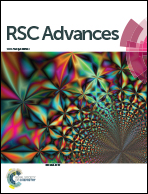Sonochemical synthesis of hydroxyapatite nanoflowers using creatine phosphate disodium salt as an organic phosphorus source and their application in protein adsorption
Abstract
In this paper, the one-step rapid synthesis of hydroxyapatite nanoflowers (HAFs) using creatine phosphate disodium salt as an organic phosphorus source by the sonochemical method is reported. The HAFs with diameters of about 300 nm are formed by self-assembly of hydroxyapatite nanosheets with thicknesses of less than 10 nm. The as-prepared samples are characterized by scanning electron microscopy (SEM), transmission electron microscopy (TEM), Brunauer–Emmett–Teller (BET) nitrogen sorptometry, X-ray powder diffraction (XRD), Fourier transform infrared (FTIR) spectroscopy and inductively coupled plasma (ICP) optical emission spectroscopy. The MTT tests show that the as-prepared HAFs exhibit essentially inappreciable toxicity to MC-3T3 osteoblast cells, indicating that the HAFs have an excellent cytocompatibility. Moreover, the as-prepared HAFs show a relatively high protein adsorption ability when using hemoglobin (Hb) as a model protein. Thus, the as-prepared HAFs are promising for applications in various biomedical fields such as protein/drug delivery.


 Please wait while we load your content...
Please wait while we load your content...